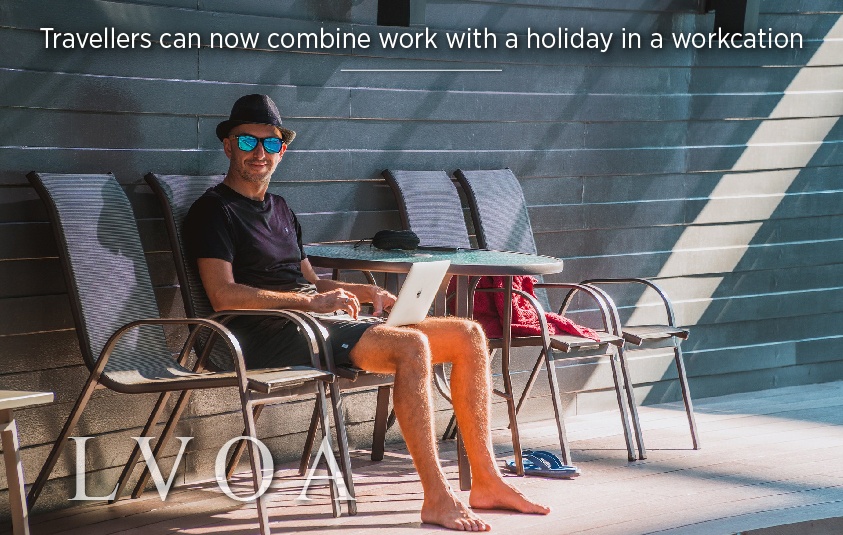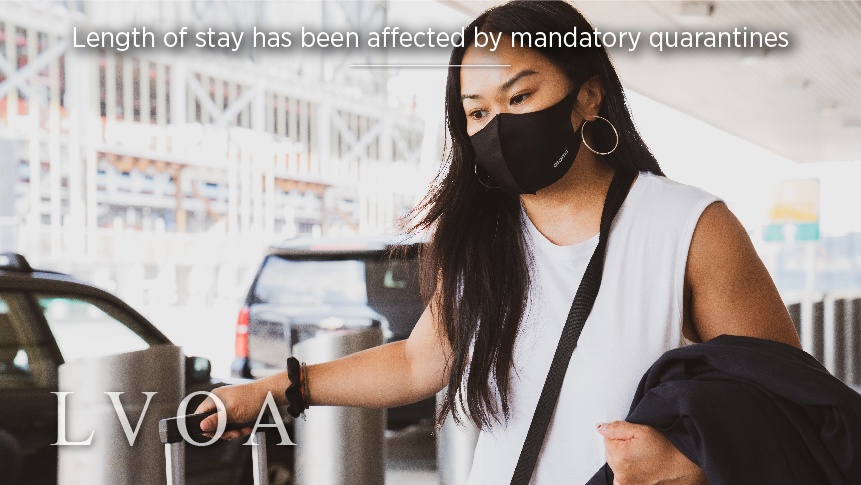Much has been written about how travel will change post-Covid. As more and more countries are opening up to vaccinated travellers, some without quarantine, we’re starting to see trends emerge. However, much speculation has revolved around what people are looking for in terms of experiences e.g. remote locations, retreats in nature, wellness, relaxation, and escape.
Here, we explore more about how the logistics of travel are changing, particularly when it comes to numbers: the decrease in business travel, the increase in workcations and remote work, the average length of stay, and the frequency of travel.
Business travel
Business travel came to a screaming halt at the onset of the pandemic, when video conferencing replaced in-person meetings and events out of necessity. As we look to 2022, in-person events are being organised again and workers are heading back to the office, even if only part-time.
Yet, as the opportunity for business travel starts to reemerge, will it return to its former glory? The well-developed connectivity provided by Zoom and other video conferencing resources have their cost-cutting benefits in travel time, expenses, as well as environmental impact. So far, evidence shows that corporate travel is returning at a much slower rate than leisure travel.
“Business travel will go back slower. Will it go back to pre-pandemic levels? I don’t think so. I think we will lose 20 percent of that forever,” says Dirk Bakker, head of EMEA Hotels & CEO Netherlands, Colliers, to Arabian Business. This time last year, Bill Gates’ hypothesised that as much as 50% of business travel will be lost post-pandemic.
What does this mean for hospitality? If leisure travel is going to take a more prominent place in the industry, hotels currently catering to business travellers will have to change their game.
Work and travel
So, what should business hotels pivot to? As people have grown accustomed to working from home, they now know that all they need to work with is their laptop, which means they can work from anywhere. Business travel may not return, but there is still business-focused demand in the form of remote workers travelling and working, or simply escaping their homes for a change of scenery by working from a local hotel. Hotels are already responding to the work from home (or hotel) trend by offering WFH packages.
This may also have a knock-on effect with leisure travel, as the lines between work and home are blurred. The leisure traveller could start taking much longer holidays than before – up to a month away from home is not a problem – as all you need is reasonable Internet connectivity in order to work for some of that time. Therefore, it’s not just business hotels that need to pay attention to this new kind of traveller; leisure hotels and resorts should also ensure their WiFi and business facilities are up to scratch.
Even Airbnb has reported an increase in long-term city stays, likely due to guests working online from their accommodation. This trend echoed across many of its markets around the world, including the Americas, Europe, Asia, and Oceania.

Leisure travel
The length of a trip is also greatly affected by potential quarantines on either end, whether it’s business or leisure travel.
According to data from the Global Hotel Alliance (GHA), the average international length of stay for Asian travellers saw the highest increases from pre-pandemic numbers, in comparison to other markets. Singaporeans’ length of stay increased by 169% in 2021 compared to 2019, whereas for Hong Kongers it was +245%. Of course, up until recently, Singapore required a 14-day quarantine for international arrivals, while Hong Kong required 21 days, so international travellers needed to make their trips worthwhile by making them longer.
For now and looking to 2022, travel intent continues to climb. Travel trends in full force include revenge travel (a strong desire to break free of the “new normal”), which includes planning more extensive and more expensive trips than taken pre-pandemic, to make up for lost time. Another big trend is trip stacking, particularly over the 2021-22 festive period, in which travellers are booking multiple flexible and refundable trips with varying rates of risk (e.g. domestic vs international). The idea is that if the riskier option falls through due to last-minute changes, then there is a safer backup option.
Travel frequency is changing
So, although travel is returning in varying degrees, it is already much-changed. How often people are travelling, their purpose for travel, and other factors of the trips, such as cost and length, have been adjusted by the pandemic.
Sure, the pandemic has taught us that much can be achieved from working at home and online, but it has also proved the value of face-to-face interaction and getting away from it all. As travel continues to rebound and destinations reopen, the hospitality industry must be ready for this new kind of traveller; their needs, their wants, and their expectations.







